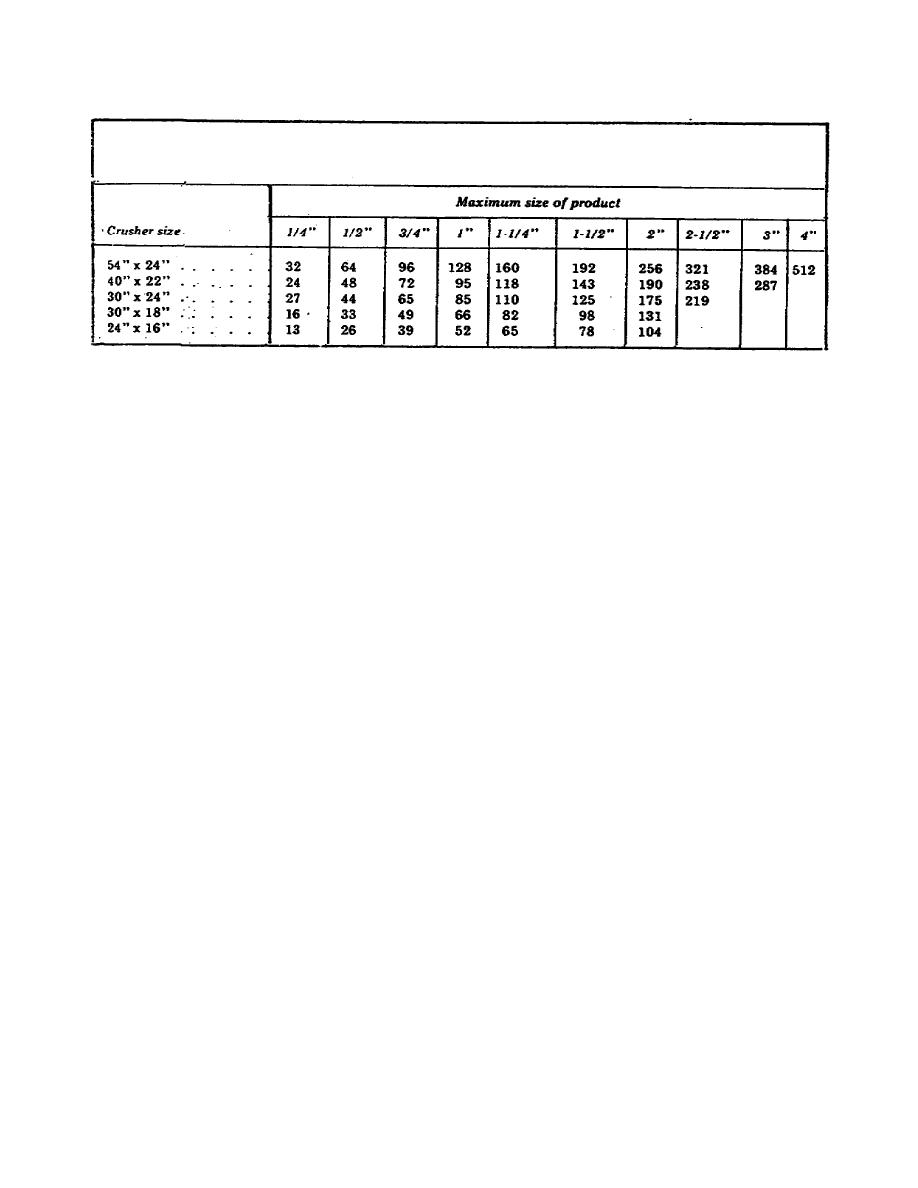
Lesson 2/Learning Event 3
TABLE 7. ROLL CRUSHER CAPACITY (tons per hour)
SIEVE ANALYSIS
After the production rates are determined for the jaw and roll crushers, the next step is to make a theoretical sieve
analysis. This is to determine the percentage breakdown of the various sizes of material produced. It should be
remembered that in any crushing operation, sizes will be produced from the maximum product size down to dust
to include all sizes in between. The purpose of the sieve analysis is to calculate how many tons of various size
aggregate will be produced from the jaw crusher action and the roll crushing action. From this the actual amount
of product size aggregate (3/4 inch to 3/8 inch, in this example) that will be produced each hour can be
determined.
The jaw crusher has been set to produce maximum size particles of 2 1/2 inches in the primary crushing operation
of this example. But material ranging from 2 1/2 inches down to dust particles will result. The roll crusher has
been similarly adjusted to produce particles ranging from 3/4 inch (top roll product size) down to dust. Tables 8
and 9 have been developed to show the percentage breakdown of each particle size produced based on the
particular crusher setting.
Because the screens receive material from both crushers, a sieve analysis must be done for both crushers. Each
particle size in the specifications from top product size down to the lowest specified size must be analyzed, plus
material in the pan is included. NOTE: Pan is the by-product that goes through all the sieves but must be included
in the sieve analysis for 100% of the aggregate crushed.
55



 Previous Page
Previous Page
